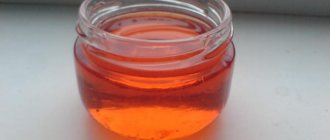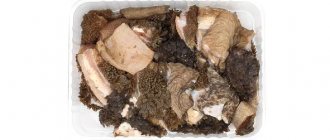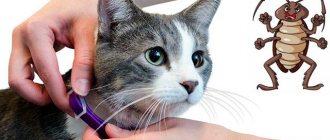Probably everyone who has cats has heard more than once that there are herbs that they feel addicted to. For example, valerian. However, this is not the only plant whose fragrance has a funny “narcotic effect” on cats.
There is another perennial herbaceous plant - it is called catnip. Simply put, catnip. The original lemon scent of catnip attracts four-legged animals, although not as powerful as valerian. The effects of it do not last long, and not everyone reacts to its smell.
As it turns out, cats love mint. Many people cultivate this plant in their gardens. And if you don’t have your own front garden, it doesn’t matter, you can try growing catnip for cats at home, in pots or flower boxes. Catnip is simple and unpretentious. It blooms with cute little lilac flowers. This grass is a honey plant, it contains a lot of nectar, so the bees do not ignore it.
Why do cats love mint? The leaves and inflorescences of the plant contain a lot of essential oil, which smells like lemon and this attracts the attention of cats. If you rub the leaves with your fingers, the smell becomes even stronger. Both fresh and dried herbs have a bright attractive aroma.
If you give a cat catnip, it will have a slight relaxation effect, and he may roll on the ground, crush the leaves of the plant, purr, shake his head, drool, jump as if experiencing a feeling of joy, or vice versa, lie on his back and spread his paws.
Other animals may have the opposite reaction; the smell of mint may arouse aggression in them, and they will behave as if during mating season. There are many videos on YouTube with cats about how the animals love to roll around in thickets of plants, chew twigs or rub against them under the influence of catnip: it’s so funny to see the reaction catnip produces on them! And it also happens that the cat ate mint and, on the contrary, became quiet and relaxed, lay down under a bush and seemed to be sleeping.
What is catnip
Catnip is a species of plant from the Lamiaceae family. Its main features are a strong aroma and high menthol content.
Characteristics and naming options
Catnip is easily identified by its heart-shaped leaves, lilac flowers, and aromatic lemon scent. It is widespread in Russia, Europe and Asia, and is also found in India, Nepal and Pakistan.
An alternative name for the plant is catnip. Its extraordinary popularity among cats is explained by its high content of essential oils, which emit an attractive aroma for them.
Varieties
Catnip is mainly used in the pet industry, but it can also be found in the food industry and in the production of medicines, perfumes and cosmetics. The plant is unpretentious in care, so it is easy to grow at home on a regular windowsill. The most important thing is not to confuse catnip with its closest relatives. In addition to it, the following varieties are often found in Russia:
- aquatic - a wild species that grows near rivers and streams;
- fragrant, often used by gardeners to decorate rock gardens;
- pepper, obtained by hybridization of aquatic and fragrant;
- field, characterized by the weakest aroma and the absence of a specific cooling taste.
It is also worth noting 2 more varieties of pepper: chocolate and menthol. The first has a pleasant chocolate aroma and is widely used in cooking, and the second contains the largest amount of menthol and is very popular in pharmacology (Golden Star ointment and Doctor MOM cough syrup).
Growing catnip at home
Catnip can be grown in a pot on a windowsill or in your garden.
The plant is perfect for decorating borders, sidewalks and flower beds.
You can buy seedlings at the market secondhand, and seeds at a gardening store.
Catnip is incredibly resilient, quickly takes root in new places and reproduces well.
This way, you can provide your pet with entertainment for the whole summer and have fun watching his behavior.
Furry pets can look very funny when they are completely immersed in the game
By planting the plant in a pot, you can have fun with your cat’s games all year round, amuse your friends and make delicious aromatic tea.
It should be borne in mind that an animal running wild in the apartment, which is “under the mint,” may accidentally break a vase or some other thing.
To avoid this, remove all breakable items away.
So that after contact with catnip you do not have to scold your pet for breaking a vase, remove objects that it can damage in the heat of the game
Can cats have catnip?
Some owners doubt whether it is possible to give cats catnip, since its effect is very similar to a narcotic. In fact, there is no dependence on this plant, and with frequent use, it completely ceases to attract the pet.
Benefit
Ingesting catnip is not necessary. The effect is achieved even when sniffing it and fades away quite quickly, therefore, in the absence of contraindications, it can be freely used to achieve the following goals:
- behavior correction;
- stress relief;
- increased appetite;
- improving the digestion process during stomach pain and cramps;
- training (used as a reward);
- prevention of helminthiasis.
The benefits of catnip for cats are undeniable, which is why it is often added to food and toys. It can also be easily grown at home.
Harm and contraindications
Catnip does not have a negative effect on the central nervous system and gastrointestinal tract, but still has some contraindications. These include:
- Pregnancy. Severe overexcitation when carrying kittens is fraught with premature birth and miscarriages.
- Hypersensitivity to the main components. An overreaction to catnip can lead to exhaustion of the nervous system.
If your pet behaves too violently or apathetically when using the plant, then it is better to avoid using it. In this situation, you should not wait until you get used to it, as this can harm your pet.
Benefits of using mint for cats
We can say that this cat plant is like a behavior correction for some cats.
For example, in very aggressive pets, after eating catnip, their behavior becomes docile and calm, while slow and lethargic cats can become active and playful. After consumption, this plant has a bactericidal effect, that is, it relieves stomach spasms. Veterinarians confirm that mint is a good cure for stressful situations for cats. They calmly endure travel and various trips to the veterinary clinic. Also, this herb does not act as a strong drug; the cat will not get used to it if you control your pet and do not let it near the plant often.
After catnip became popular among cats, many experts began to produce special toys for cats with the smell of mint. And some owners independently sewed an artificial mouse from rags, placing dried cat grass inside. They also produced drops that drip onto a device for cats where they scratch their claws. Thus, cats do not spoil good furniture, but get used to the fragrant scratching post.
If your cat doesn't have an appetite, you can add some dried or fresh cat mint leaves to the food. It is important to note that catnip is considered an anthelmintic.
If this healing herb is not available in nature, you can plant it in a pot and place it on a windowsill where the sun's rays constantly fall. Watering frequently is not recommended; the soil should not be acidic. To prevent your cat from eating all the grass at once, after it ripens, you should pick it off, chop it up and dry it. It must be stored out of the reach of cats.
In addition to the fact that cats love this grass, it is also rich in nectar, so bees are also partial to it. It is also added to vermouth, shampoo, and perfume. Some people use mint herb as a spice in confectionery, soap making, and cosmetic purposes. It turns out that the plant treats many diseases: it improves the gastrointestinal tract, soothes migraines, and eliminates cough. It also improves blood circulation, can cleanse the lungs, and overcome insomnia. And this catnip can also help get rid of mosquitoes.
Mechanism and effect on the animal
In most cases, catnip has a stimulating effect on cats. After entering the body (through the mouth or nose), odorous substances trigger receptors responsible for the onset of sexual heat. The effect occurs almost immediately. It lasts 8-10 minutes and is accompanied by the following actions:
- demonstrative rolling on the floor;
- prolonged meowing and purring;
- body jerking and head shaking;
- biting and licking a plant or a toy stuffed with it.
After the specified time, the condition stabilizes. Catnip continues to smell, but no longer has the desired effect.
The reaction can also be the opposite. Too violent pets become calm and sleepy, so the plant is actively used to correct behavior in both directions.
Reviews of sprays and dried grass
Reviews about catnip are very contradictory. Some owners speak enthusiastically about the sprays that helped them accustom their pet to new toys or a scratching post. Someone notes that the animal remained indifferent to the smell.
Most often, the cat willingly plays with toys treated with the spray. If you sew some dry grass into a bedding or scratching post, your cat will rub against things that smell like catnip.
Each animal exhibits an individual reaction to the smell of catnip. Some cats remain indifferent, some go crazy, and in a small number of animals the behavior becomes aggressive.
- Catnip is a proven stress reliever for both humans and cats.
- When using it as a medicine, you should familiarize yourself with contraindications, since catnip can cause allergies and a decrease in blood pressure.
- If catnip is used as a treat for a pet, you need to observe its reaction.
- The cat may not respond to the smell, or may become overly excitable.
Whether or not to give a pet catnip is up to the owner to decide. What may be enjoyable for one cat may be harmful for another.
How to properly give catnip to your cat
In veterinary pharmacies and pet stores, catnip is sold not only in dry and fresh form, but also inside toys - in the form of dense balls and spray. Each type has different effectiveness.
Dry or fresh
Dry and fresh catnip is used as an everyday treat and for training. First, the leaves are rubbed in your hands to enhance the aroma and laid out on the desired surface: a sleeping place, a scratching post, or on a long-forgotten toy.
For cats, fresh catnip is preferable, as dry catnip has a weaker effect. The quality of raw materials also plays an important role. Only the leaves produce the aroma, so too many stems will reduce the overall effectiveness. Therefore, it is better to grow the plant at home.
In toys or balls
Catnip in its “live” form is the most effective, but it leaves a lot of dirt behind. Dried leaves crumble into fine dust, and the living plant often ends up toppled over.
If the presence of dirt is critical for you, pay attention to soft toys stuffed with aromatic plants. Their only drawback is their fragility. After drying, the leaves stop emitting aroma, so the toys require regular replacement.
Another interesting option is a hard and dense ball consisting of catnip and beeswax. Unlike soft toys, it is completely natural. You can even eat it, so you can easily combine a fun game with a nice meal.
In sprays - as an adjuvant
Catnip is even sold in spray form. It contains the essential oil of the plant and water, so the effectiveness is much lower than dry and fresh leaves. If, in addition to dirt, you are annoyed by toys and balls lying around everywhere, then this option is for you.
Catnip spray is used to acclimate cats to scratching posts and to calm them down before their next trip to the vet. Despite the presence of water, this product does not cause fear or rejection when sprayed directly onto the fur coat.
Is peppermint dangerous?
Peppermint most often grows in summer cottages and gardens. It does not cause such euphoria as catnip in pets, but cats themselves choose which herbs they need for health. Therefore, it is not worth forbidding the cat to eat mint, driving the cat away and brutally weeding the entire area. Peppermint contains many vitamins and microelements necessary for animals. If a cat chews a mint leaf, it means he needs it.
Peppermint is added to cat toys and treats, and some manufacturers even add it to complete food. It normalizes the functioning of the gastrointestinal tract, eliminates flatulence, normalizes bile secretion functions, and stimulates cardiac activity.
Why doesn't my cat react to catnip?
It was already mentioned above that the reaction to catnip can be different, and sometimes it is completely absent. If your pet does not show interest in the plant, this can be explained by one of the following reasons:
- Absence of a specific gene. Only 70% of mustachioed pets are susceptible to the smell of the plant. The remaining 30% are indifferent to it and pass this feature on to their children.
- Young age. The effect is observed only in sexually mature individuals, since kittens are not yet familiar with sexual heat.
- Severe stress. Catnip is used before encountering stress factors, and not during.
- Low essential oil content. It is observed in products with low-quality raw materials, so be sure to look at the reviews of other customers.
In the last 3 cases, the lack of reaction is temporary, and in the first - permanent. If your cat is in that same 30%, then her kittens are likely to be exactly the same.
Content
1. About the beneficial properties of the plant 2. Catnip - what is it? 3. Can a cat have catnip 4. Is peppermint dangerous 5. How to use peppermint for cats 6. Peppermint as a means of education 7. For whom is mint dangerous?
Many pet owners know about cats’ strange love for the smell of mint, but few people think about whether cats can eat mint. It is interesting to observe how strangely pets behave when they smell the scent of weed. However, is it harmful to animal health?











